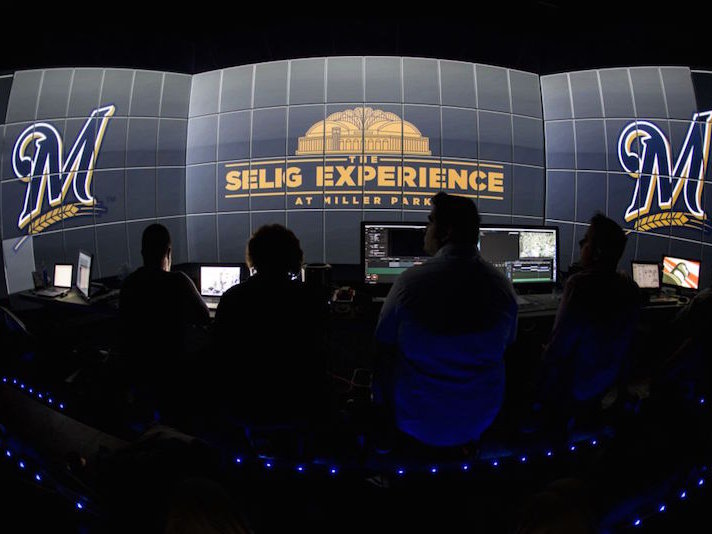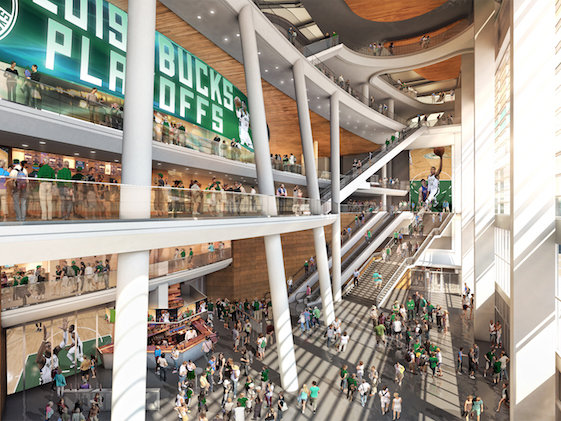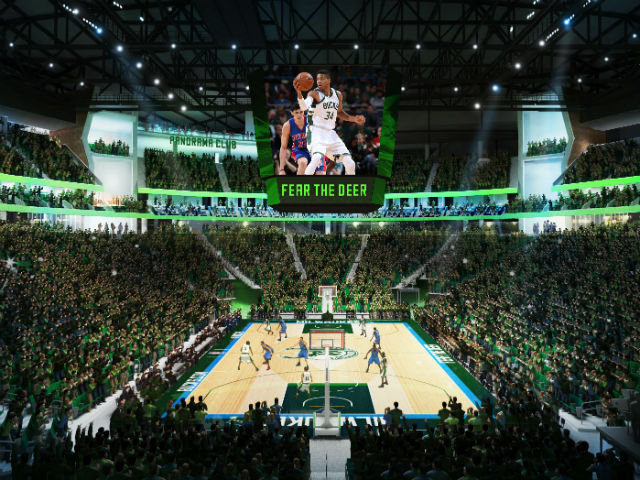For the past two decades the Milwaukee Bucks have disproved a fear that former Milwaukee Brewers' owner Bud Selig had when it was time to build Miller Park.
And the historic presence of the Bradley Center can bolster confidence that Selig's fears will not resurface when the new arena is built.
A little history is needed here.
Just before the turn of the century Milwaukee was agonizing over the proposal to build a new baseball stadium. The old one was hopelessly outdated. The new one would provide new revenue streams for the Milwaukee Brewers; revenue that would allow the Brewers to become a contender. A task force of community leaders took a long look and agreed we should build a new home for the team.
The arguments raged with never-ending fervor. How was it going to be financed? How long will it take to open? Will it really make the Brewers a better team?
And one issue that was almost as contentious as the financing was the location for the new park.
There was one influential group that wanted to build Miller Park Downtown and the soon-to-be -torn-down Park East area was under consideration. Milwaukee’s mayor, John Norquist, led the fight for the new ballpark Downtown. Bud Selig, who owned the team, didn’t agree and fought tooth and nail for the current site.
Norquist argued that a Downtown ballpark would spawn surrounding development and provide an economic and social boost to Milwaukee. Selig said he was concerned about parking and that people wouldn't be able to tailgate.
There was also, however, another argument made in favor of the County Stadium site: people from the suburbs and other counties wouldn’t come to any ballpark that was so close to high-crime areas. The discussion was heard on talk radio, and there were meaningful discussions held in private.
Selig and Norquist negotiated for months and both stood firm. On the eve of the approval of public financing, when Selig called Norquist to ask him to help lobby the legislature, Norquist said that he thought Selig was calling to give his OK to the Downtown site in exchange for the approval of the funding mechanism.
Nobody will ever know if a Downtown ballpark would have been unattractive to many Brewers fans because of fears of crime. But the issue in the Miller Park debate could be raised again in relation to the construction of the new arena for the Milwaukee Bucks.
Plans call for that arena to be built just north of the Bradley Center and adjacent to the two aldermanic districts that have the highest levels of poverty and crime in the city. But it's not the statistics that are going to be in play here.
Twenty years ago powerful people who supported the Selig position believed the perception of Downtown Milwaukee was that it was a threatening and violent place, far removed from the safety of the largely white suburbs that surrounded the city.
That perception hurt Downtown Milwaukee and, for example, was a major factor in the slow and lingering death of Grand Avenue Mall. White suburbanites didn’t want to go to Grand Avenue after reports of black kids causing a ruckus.
Clearly there is a role that the media, especially the television media, plays in this whole thing.
The motto of local television newscasts is "if it bleeds, it leads." There have been dozens and dozens of respected studies that prove local television stations lead their newscasts with crime stories far more often than anything else.
Think about the television news you see. Perhaps the most frequent image is a scene surrounded by yellow police tape and flashing lights, both at night (the kind TV loves best) or during the day. The other frequent piece of tape is the reporter carrying a microphone going to the door of some miscreant,knocking on the door that remains steadfastly unanswered and then walking away in disgust.
If you watch local television news and thousands and thousands of white people in the suburbs do, you might well have the impression that the central city of Milwaukee (the area adjacent to the site of the new arena) is nothing more than a modern-day OK Corral patrolled by black thugs.
Of course nothing could be further from the truth. But as they say, "perception is reality."
The Bucks say one-third of their ticket sales come from Milwaukee County, another third from the five-county area and the remaining third from beyond. That’s a lot of people who are susceptible to media-driven impressions.
But when you look at the Bucks attendance over the years it's abundantly clear that the major factor affecting attendance is the performance of the team. Put a good and exciting team not he floor and fans, black, white, brown and checkered will beat a path to the door.
And that, among other things, is what the Bucks are counting on.
Jake Suski, senior vice president of communications and broadcasting for the Bucks, was very clear about the intention of the owners and operators of the Bucks.
"We are committed to having an exciting team and exciting events at the new arena," Suski said. "History shows that people will come as long as we are giving them something exciting.
"Sure, we're aware of the community and our neighbors, but we intend to have a prominent role in making Milwaukee a better and safer city. We don't think this is an issue. The Bucks have and will continue to reach out to all communities everywhere in the area. We are convinced that the arena will be a world class attraction for fans from all over the state."
There are people who fear that times have changed so much since Selig fought for his location that it will have an impact on attendance.
But the Bradley Center experience contradicts to that theory and adding a great three-point shooter to the team will have a more impact than anything else on attendance.
With a history in Milwaukee stretching back decades, Dave tries to bring a unique perspective to his writing, whether it's sports, politics, theater or any other issue.
He's seen Milwaukee grow, suffer pangs of growth, strive for success and has been involved in many efforts to both shape and re-shape the city. He's a happy man, now that he's quit playing golf, and enjoys music, his children and grandchildren and the myriad of sports in this state. He loves great food and hates bullies and people who think they are smarter than everyone else.
This whole Internet thing continues to baffle him, but he's willing to play the game as long as OnMilwaukee.com keeps lending him a helping hand. He is constantly amazed that just a few dedicated people can provide so much news and information to a hungry public.
Despite some opinions to the contrary, Dave likes most stuff. But he is a skeptic who constantly wonders about the world around him. So many questions, so few answers.







